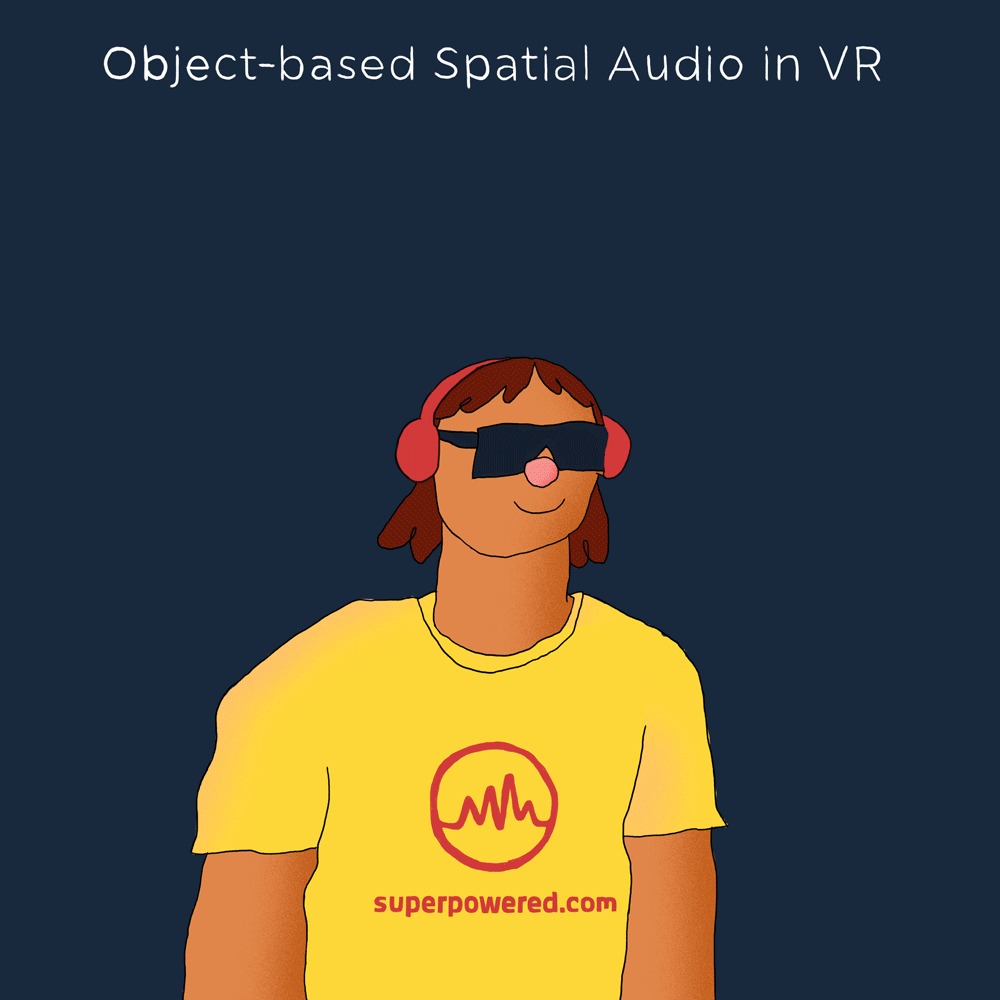The Superpowered Audio Spatializer and Ambisonics for Virtual Reality Audio

To immerse users and build captivating experiences, VR developers shouldn’t have to spend weeks tweaking, tuning, hacking and optimizing spatialized audio sources in a virtual soundfield, fighting a never-ending, low-level resource war over the CPU and memory bus.
And now they won’t.
We’re happy to announce that the Superpowered Audio SDK includes the Superpowered Audio Spatializer for both object-based and cinematic 3D audio.
The Superpowered Audio Spatializer - like all Superpowered technology - is optimized for development on mobile devices and boasts extremely low-power and great efficiency, yet provides a unique "musicality" feature suitable any form of audio, be it simple game effects or high quality music.
The Superpowered Audio Spatializer requires magnitudes less CPU computing capacity, less memory bandwidth and other system resources than any other spatializer solution, allowing for significantly higher frame rates on every device, especially critical for mobile VR.
[Readers interested in the dangers of "phase-y" processed sound in VR and low-level hardware constraints on video and audio performance should also read How 3D Spatialized Audio Bottlenecks Virtual Reality Video, 3D Audio HRTF Processing Memory Bus Calculation and Mobile Audio Processing and Memory Bus Bandwidth and Load.]
Better Spatialized Audio for Unity Developers
In the SuperpoweredSpatializer/SuperpoweredUnity folder is a simple Unity project with a spatialized audio source and a wall to test sound occlusion. The two sound modes of the Superpowered Spatializer can be switched directly at the audio source object. The project can be built for both Mac OSX and Android.
The source code for occlusion is included in the SuperpoweredSpatializer script asset. It implements a simple raytracing-based method, which is good for most applications and is the only solution for fully automatic operation. A more sophisticated solution could be developed by using probes, but would require significant work from the scene's developer.
Unity Audio Spatialization with Unity Native Audio Plugin Support
The full source code of the Superpowered Spatializer and Global Reverb plugins for Unity is available in the SuperpoweredSpatializer/src folder.
This example shows how to create native Unity audio plugins using Superpowered. Together with the Unity example project it provides a fully automatic development environment.
SuperpoweredSpatializer/Xcode and SuperpoweredSpatializer/Android folders contain the build environments for Mac OSX and Android. The outputs are directly copied to the appropriate plugins folder of the SuperpoweredUnity project. After a successful build, re-launching Unity is required as Unity can not reload plugins.
Ambisonics B-format Audio
The SuperpoweredSpatializer/ambi folder has a first-order b-format ambisonics implementation based on the SuperpoweredSpatializer. The full source is included.
This environment is implemented with 14 virtual speakers and is a great starting point for more advanced ambisonics projects. It reads two stereo audio files as the source for the four b-format channels.
Superpowered Standard
Like all Superpowered Audio SDK features, the Superpowered Audio Spatializer is free, low latency, and cross-platform on Android, OSX and iOS.
Download Superpowered Audio SDK today. We look forward to hearing your work.
- 3d audio
- spatializer
- hrtf
- ambisonics
- virtual reality audio
